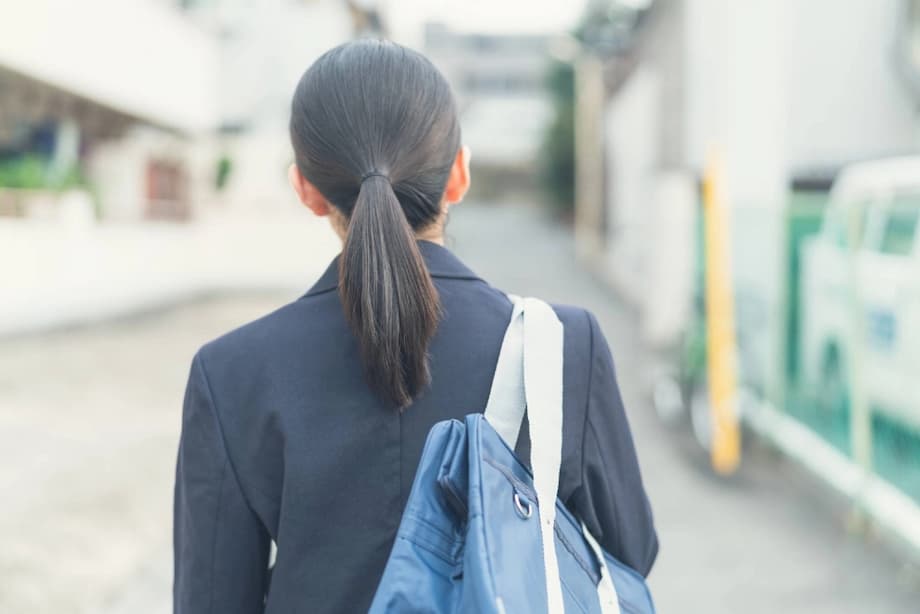Japanese Teens and the Painful Return to School: A Crisis Unfolds
For millions of Japanese students, the end of summer vacation is not just the close of a carefree season—it marks the return of anxiety, stress, and, for some, a profound sense of dread. Recent surveys and mounting evidence reveal that the transition back to school is a uniquely painful experience for many Japanese teens, with consequences that extend far beyond the classroom. The phenomenon is so pronounced that September 1, the day most schools reopen, has become a date of national concern, coinciding with a spike in youth suicides and renewed calls for urgent mental health reforms.
- Japanese Teens and the Painful Return to School: A Crisis Unfolds
- Survey Reveals Deep Discomfort Among Japanese Teens
- September 1: A Date Marked by Tragedy
- Why Is School So Painful for Japanese Teens?
- The Role of Group Culture and Conformity
- Government and Community Responses: Are They Enough?
- Expressing Pain: The Rise of ‘Yami Kawaii’ Culture
- The Impact of COVID-19 and Other Crises
- Comparing Japan Internationally: A Stark Contrast
- What Can Be Done? Paths Toward Hope and Healing
- In Summary
Survey Reveals Deep Discomfort Among Japanese Teens
A recent survey conducted by the Yokohama-based nonprofit Daisan Kazoku highlights the emotional toll that the end of summer vacation takes on Japanese students. Of 216 respondents aged 10 to 18 who self-identified as struggling with school life, a staggering 73.1% described the start of the new term as “painful.” Another 14.4% called it “boring,” and only 1.9% said they were actively looking forward to it. The top reasons cited included a fear of being judged by others (79.6%) and a stifling school atmosphere (71.3%). Nearly half reported having no friends, and 44% said they could not keep up with classes.
These findings are not isolated. They reflect a broader, deeply rooted issue within Japanese society, where academic pressure, social conformity, and mental health stigma intersect to create a challenging environment for young people.
September 1: A Date Marked by Tragedy
While the start of a new school year is often met with anticipation in many countries, in Japan, September 1 is associated with a grim statistic: it is the day when Japanese children are most likely to take their own lives. According to a study by Japan’s Cabinet Office, between 1972 and 2013, 131 child suicides occurred on this date—more than any other day of the year. The numbers spike again in April, when schools reopen after spring break.
In 2024, Japan recorded its highest number of student suicides ever, with 529 cases among elementary, junior high, and senior high school students. This surpassed the previous high of 514 set in 2022. The leading causes were linked to school-related stressors such as academic performance, peer conflicts, and anxiety over future prospects. Health problems, including depression, were cited in nearly a third of cases, and family-related issues were a factor in 20%.
September remains the most dangerous month, with the highest number of student suicides coinciding with the end of summer break and the start of the second school term. The pattern is so well-known that public campaigns and celebrity outreach efforts intensify each year as the date approaches, urging at-risk children to seek help and reminding them that it is okay to ask for support.
Why Is School So Painful for Japanese Teens?
Several interlocking factors contribute to the distress experienced by Japanese students at the end of summer vacation:
- Academic Pressure: Japan’s education system is highly competitive, with intense focus on exams and performance. Falling behind can lead to feelings of inadequacy and hopelessness.
- Bullying and Social Isolation: Bullying (ijime) is a persistent problem. Victims often feel unable to escape their tormentors, especially in a culture that prizes group harmony and conformity. Nearly half of surveyed teens reported having no friends.
- Stigma Around Mental Health: Despite growing awareness, mental health issues remain taboo in Japan. Many students internalize their struggles, believing they must endure in silence rather than seek help.
- Cultural Attitudes Toward Suicide: Unlike in many Western societies where suicide is considered a sin, in Japan it has historically been seen as a way of taking responsibility or seeking forgiveness, rooted in practices like seppuku among samurai and kamikaze pilots during World War II.
- Underdeveloped Mental Health Support: Japan has fewer psychiatrists per capita than other developed nations, and coordination between mental health professionals is limited. Government-mandated training for clinical psychologists is lacking, and school-based support is often insufficient.
The Role of Group Culture and Conformity
Japanese society places a premium on group harmony and conformity, a dynamic that can be both supportive and suffocating. For those who do not fit in—whether due to personality, interests, or academic ability—the pressure to conform can lead to exclusion, bullying, and a sense of isolation. Teachers, too, may avoid intervening in bullying cases to maintain classroom harmony, sometimes even participating in the ostracism of students who are different.
Dr. Ken Takaoka, a child psychiatrist, explains that schools prioritize collectivism, and children who struggle to get along in a group are more likely to suffer. The phenomenon of hikikomori—extreme social withdrawal—further compounds the problem, as some students retreat entirely from social life, feeling they have no outlet for their emotions.
Government and Community Responses: Are They Enough?
Recognizing the crisis, the Japanese government has launched a series of initiatives aimed at reducing youth suicides. These include:
- Awareness campaigns and public discussions about mental health
- 24-hour telephone counseling services for children and parents
- Efforts by the Children and Families Agency to spread awareness about the reality of child suicide
- Encouragement from charities and NGOs for students to stay home if school becomes unbearable
Despite these efforts, critics argue that much more needs to be done. Aya Abe, a professor at Tokyo Metropolitan University, notes that there is still little awareness that children can have mental health problems, and government measures have been largely ineffective. Many interventions are designed with adults in mind and do not address the unique needs of children and adolescents.
Some community initiatives have taken creative approaches. Libraries and even Tokyo’s Ueno Zoo have offered themselves as refuges for students afraid to return to school, sending the message that it is okay to seek safety and support outside the classroom. Celebrities and influencers use social media to reach out to struggling teens, sharing messages of hope and solidarity.
Expressing Pain: The Rise of ‘Yami Kawaii’ Culture
In recent years, Japanese youth have found new ways to express their mental health struggles. The “yami kawaii” (sick-cute) fashion trend combines the pastel colors of mainstream kawaii culture with darker, unsettling imagery—think pink dresses paired with necklaces shaped like syringes or T-shirts emblazoned with messages like “I want to die.” While it may seem disturbing to outsiders, for many teens, it is a way to signal understanding and solidarity with others experiencing depression or suicidal thoughts.
Fashion critic Misha Janette describes it as a form of cosplay that allows individuals to make light of their depression and connect with others in similar situations. Bill Cleary, clinical director at TELL Lifeline, believes that expressing emotions through fashion can help reduce shame and provide a safe context for sharing experiences.
The Impact of COVID-19 and Other Crises
The COVID-19 pandemic has exacerbated mental health challenges for Japanese youth. School closures, social isolation, and family stress have all contributed to an increase in youth suicide rates, particularly between August and November 2020. While rates have since returned closer to pre-pandemic levels, they remain elevated, and the effects of the crisis continue to linger.
Research suggests that interventions providing mental support and opportunities for regular social interaction can help mitigate these effects. Lessons from previous disasters, such as the Great East Japan Earthquake, indicate that promoting physical activity, providing psychological support, and addressing depressed mood are crucial for building resilience among adolescents.
Comparing Japan Internationally: A Stark Contrast
Japan’s youth suicide rate is among the highest in the developed world. According to a recent UNICEF report, Japan ranked 32nd out of 43 developed and emerging nations for youth mental well-being, with suicide rates the fourth highest among wealthy states surveyed. In contrast, Japan topped the list for physical health, highlighting a stark disconnect between physical and mental well-being.
While the overall suicide rate in Japan has declined significantly since its peak in 2003, the rate among children and adolescents has not followed suit. This suggests that while adult-focused interventions may be working, the unique pressures faced by young people require tailored solutions.
What Can Be Done? Paths Toward Hope and Healing
Experts and advocates agree that addressing Japan’s youth mental health crisis will require a multi-faceted approach:
- Destigmatizing Mental Health: Open conversations about mental health must become the norm, both in schools and at home. Teachers, parents, and peers should be trained to recognize warning signs and offer support without judgment.
- Expanding Access to Support: Schools need more counselors and mental health professionals, and services should be tailored to the needs of children and adolescents.
- Reducing Academic Pressure: Reforms to the education system could help ease the intense focus on exams and rankings, allowing students to learn at their own pace and pursue diverse interests.
- Encouraging Social Connection: Programs that foster friendship, inclusion, and resilience can help counteract the isolating effects of bullying and group conformity.
- Learning from Youth Culture: Embracing creative expressions like yami kawaii can provide new avenues for young people to share their struggles and find community.
Ultimately, the goal is to create a society where children feel safe, supported, and valued—not just for their academic achievements, but for who they are as individuals.
In Summary
- The end of summer vacation is a uniquely stressful and painful time for many Japanese teens, with surveys showing high levels of anxiety and dread about returning to school.
- September 1, the day most schools reopen, is associated with a spike in youth suicides, making it a date of national concern.
- Key factors include academic pressure, bullying, social isolation, mental health stigma, and cultural attitudes toward conformity and suicide.
- Government and community responses have increased, but critics say more targeted support for children and adolescents is needed.
- Youth culture trends like yami kawaii offer new ways for teens to express and cope with their struggles.
- Experts call for destigmatizing mental health, expanding support services, reducing academic pressure, and fostering social connection to address the crisis.












